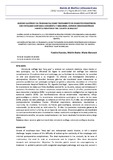| dc.rights.license | http://creativecommons.org/licenses/by-nc-sa/3.0/ve/ | es_VE |
| dc.contributor.author | Narváez, Yaneira | |
| dc.contributor.author | Bodor, Mairin | |
| dc.contributor.author | Marczuck, María | |
| dc.date.accessioned | 2022-04-18T16:20:57Z | |
| dc.date.available | 2022-04-18T16:20:57Z | |
| dc.date.issued | 2022 | |
| dc.identifier.issn | 2244-7482 | |
| dc.identifier.uri | http://www.saber.ula.ve/handle/123456789/47970 | |
| dc.description.abstract | Atresia de esófago tipo “long gap” y lesiones por sustancia cáusticas, sigue siendo un reto quirúrgico, por la dificultad de lograr la continuidad del esófago con mínimas complicaciones. El sustituto ideal es el estómago, por su facilidad de movilización, la necesidad de solo una anastomosis y su irrigación. Se efectuó una investigación descriptiva y retrospectiva. Objetivo: Describir Ascenso gástrico vía transhiatal como tratamiento en pacientes pediátricos con patología esofágica congénita y adquirida, atendidos en el Servicio Desconcentrado Hospital Pediátrico “Dr. Agustín Zubillaga”, lapso enero 2009- octubre 2012. Se recolectaron los datos por ficha diseñada para tal fin. La muestra, estuvo conformada por 6 pacientes. Resultados: Las edades estuvieron comprendidas entre 1 y 9 años, predominando sexo masculino y lactantes (50%). La principal causa de estenosis esofágica fue por ingesta de sustancia caustica (67%). Las manifestaciones clínicas encontradas: respiratorias, reflujo gastroesofágico y vómito. Se encontraron antecedentes quirúrgicos en cuatro de los casos (66%), propios de cada patología. La estancia en UCI fue entre 5 y 8 días. Las complicaciones postoperatorias inmediatas fueron: dificultad respiratoria, atelectasia, neumotórax y neumonía; las mediatas, formación de fistula gastroesofágica, estenosis de anastomosis y evisceración. La vía enteral, se inició entre 8 y 35 días. Los pacientes mostraron ganancia de peso que osciló entre 2 y 4,2 kg, en un lapso de seis meses. El ascenso gástrico vía transhiatal es una buena alternativa ante necesidad de realizar sustitución esofágica en la edad pediátrica, técnicamente sencilla, con pocas complicaciones y con buen resultado funcional a corto y largo plazo. | es_VE |
| dc.language.iso | es | es_VE |
| dc.rights | info:eu-repo/semantics/openAccess | es_VE |
| dc.subject | Ascenso gástrico transhiatal | es_VE |
| dc.subject | Atresia de esófago | es_VE |
| dc.subject | Estenosis esofágica cáustica | es_VE |
| dc.title | Ascenso gastrico vía transhiatal como tratamiento en pacientes pediátricos con patología esofágica congénita y adquirida. Servicio desconcentrado hospital pediátrico "Dr Agustín Zubillaga" | es_VE |
| dc.title.alternative | Gastric ascent via transhiatal as a treatment in pediatric patients with congenital and acquired esophageal pathology. Deconcentrated service pediatric hospital "Dr Agustín Zubillaga" pediatric hospital | es_VE |
| dc.type | info:eu-repo/semantics/article | es_VE |
| dc.description.abstract1 | Atresia of esophagus type "long gap" and widespread caustic injuries, is still a surgical challenge, largely because of the difficulty of achieving the continuity of the esophagus with minimal postoperative complications. The ideal replacement is the stomach, by its ease of mobilization, the need for only an anastomosis and its irrigation. Was done descriptive research and retrospective. Objective: To describe gastric ascent via esophagectomy as treatment in pediatric patients with congenital esophageal pathology and acquired, served in the decentralized service Pediatric Hospital "Dr. AgustínZubillaga", in the period January 2009-October 2012. Data were collected by token designed for this purpose The sample was conformed by 6 patients. Results: The middle ages were included between 1 and 9 years, predominantly male and nursing (50%). The main cause of esophageal stenosis, was by substance intake caustic (67%). The clinical manifestations, were respiratory, vomiting and gastroesophageal reflux. Surgical history was found in four cases (66%) of each pathology,. The stay in UCI was between 5 and 8 days. Immediate postoperative complications were: respiratory distress, atelectasis, pneumothorax and pneumonia; the mediate, formation of fistula gastroesophageal, stenosis of anastomosis and evisceration. The enteral route started between 8 and 35 days. The patients showed a gain of weight which ranged between 2 and 4.2 kg, in a span of six months. The gastric rise via esophagectomy is a good alternative to need for esophageal substitution in the age of Pediatric, technically simple, with few complications and good functional outcome in the short and long term. | es_VE |
| dc.description.colacion | 88-109 | es_VE |
| dc.description.frecuencia | Semestral | |
| dc.identifier.depositolegal | ppi200802ME3759 | |
| dc.publisher.pais | Venezuela | es_VE |
| dc.subject.facultad | Facultad de Medicina | es_VE |
| dc.subject.institucion | Universidad de Los Andes (ULA) | es_VE |
| dc.subject.keywords | Ascent gastric esophagectomy | es_VE |
| dc.subject.keywords | Atresia of esophagus | es_VE |
| dc.subject.keywords | Caustic esophageal stricture | es_VE |
| dc.subject.publicacionelectronica | Revista de Bioética Latinoamericana | |
| dc.subject.seccion | Revista de Bioética Latinoamericana: Artículos | es_VE |
| dc.subject.thematiccategory | Medicina y Salud | es_VE |
| dc.subject.tipo | Revistas | es_VE |
| dc.type.media | Texto | es_VE |


